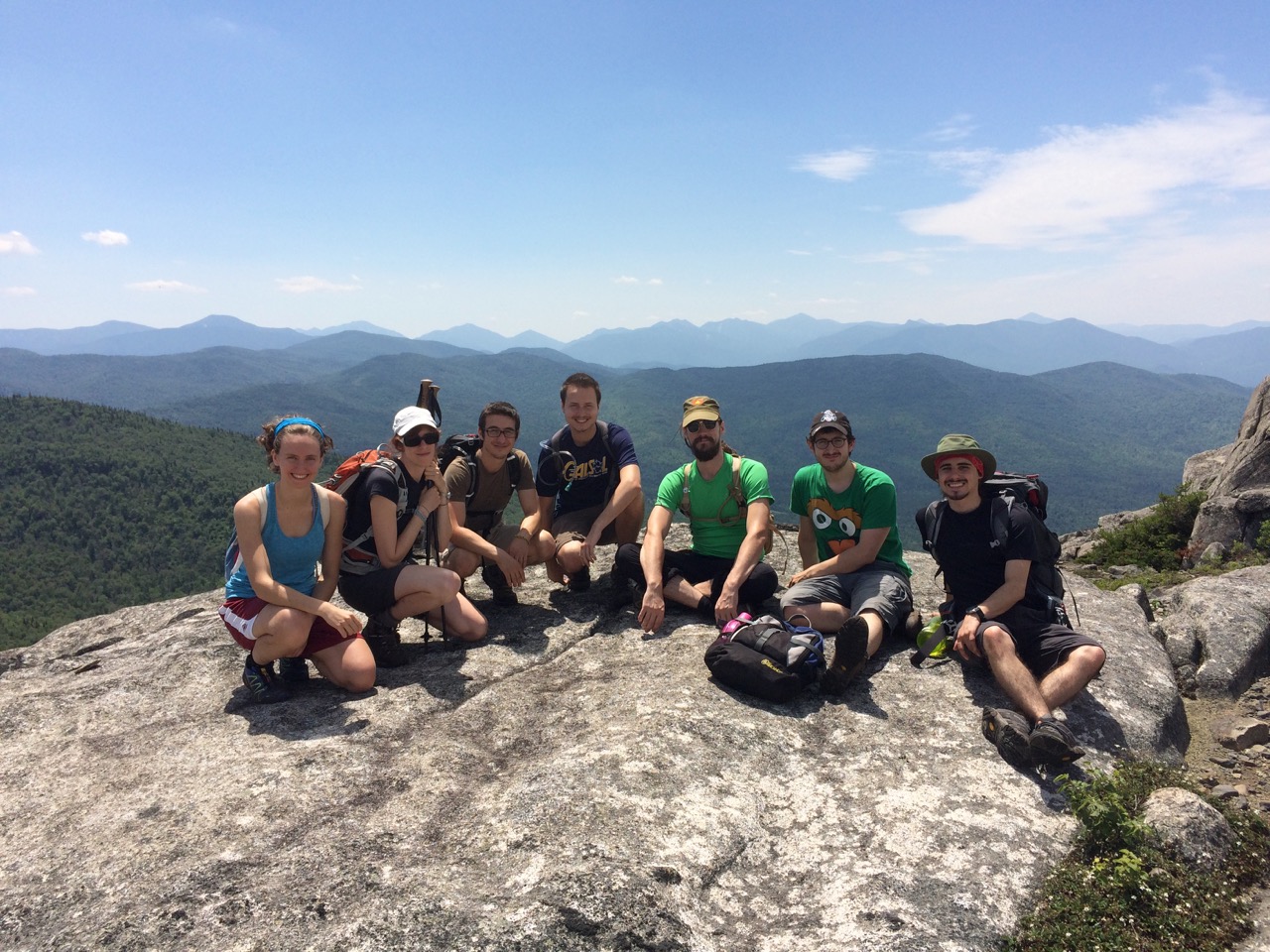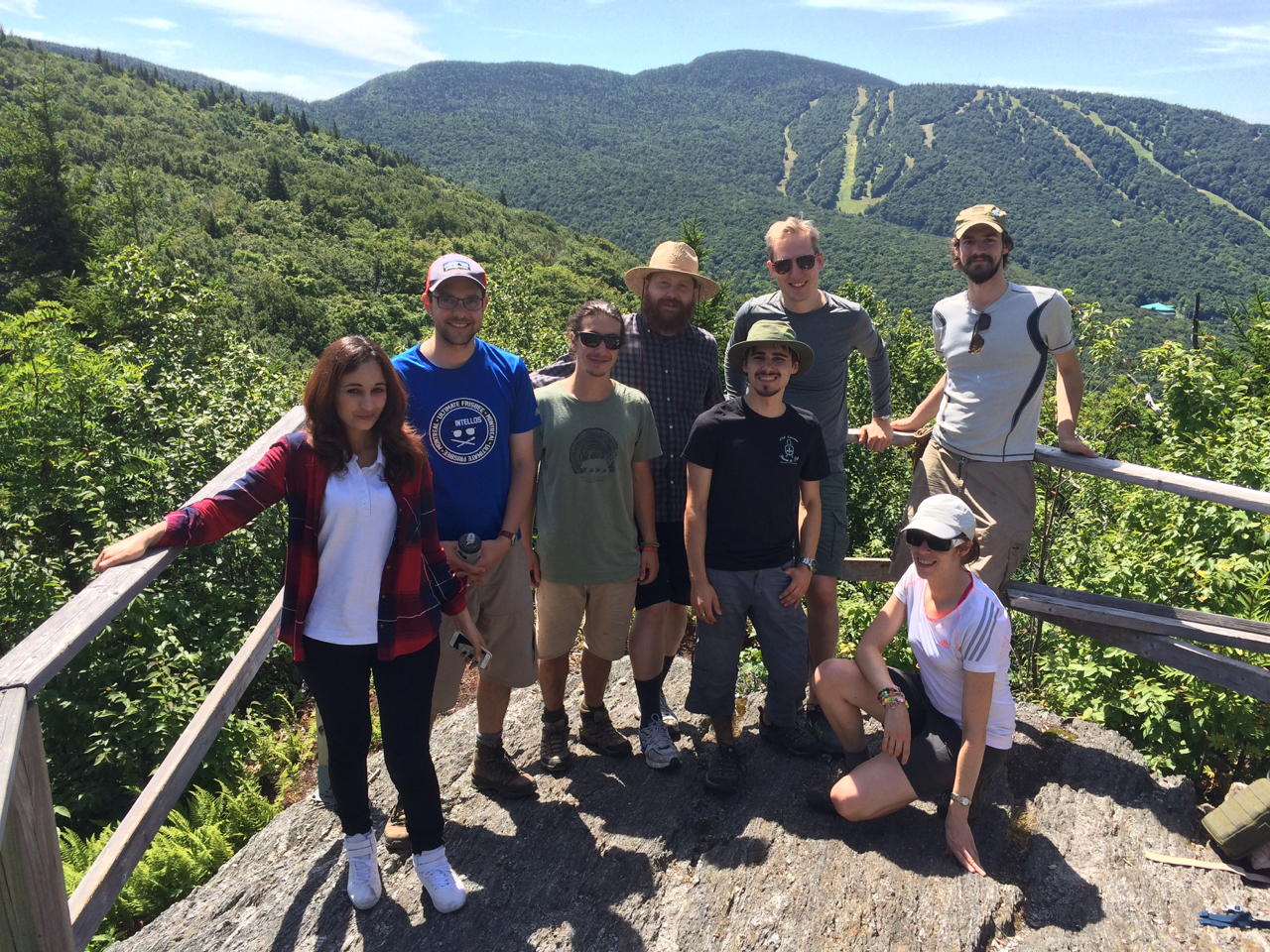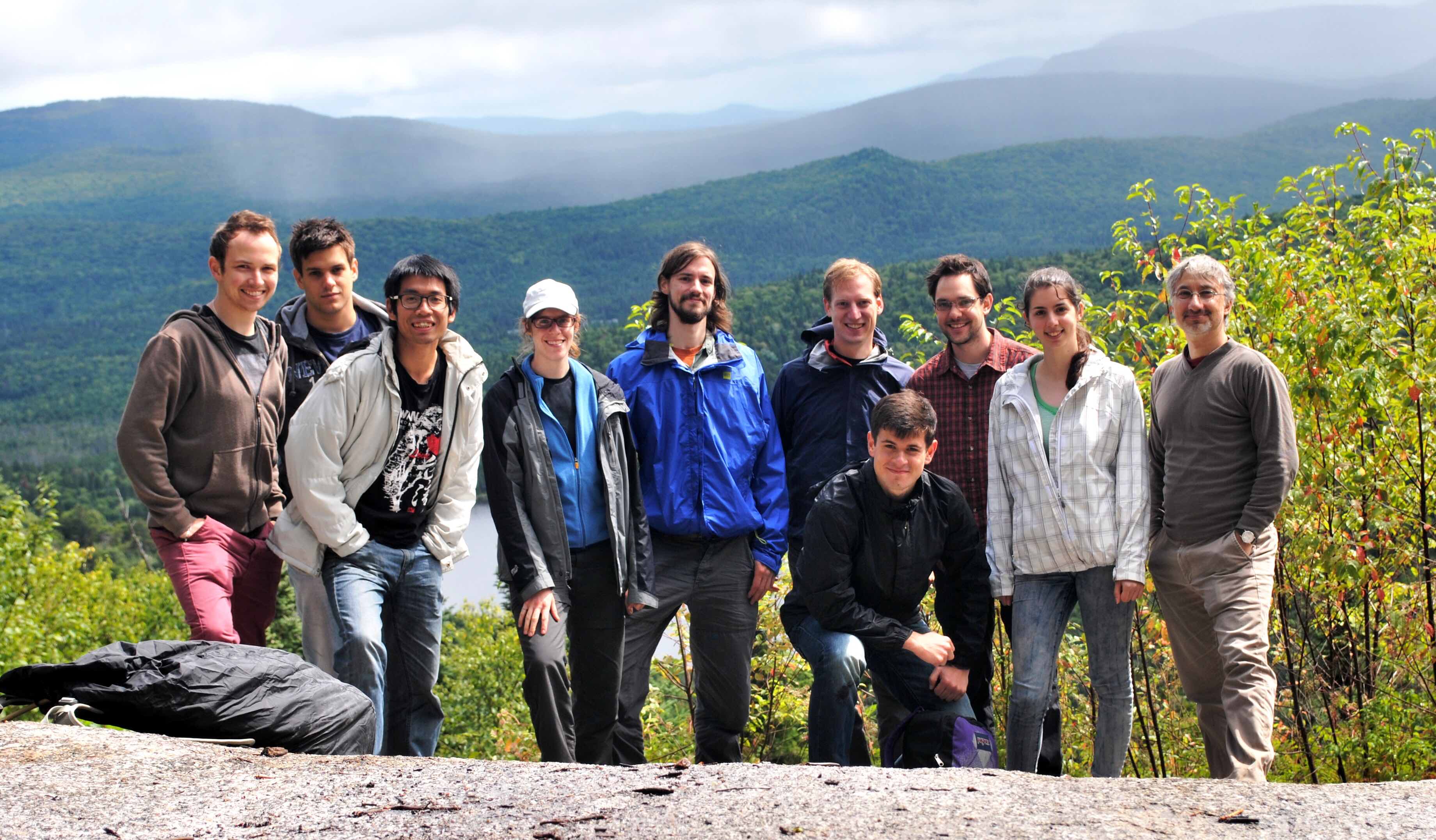
From left to right: Anna, Anne-Laurence, John, Gabriel, Alaric, Nicolas, Dominic.

From left to right: Anna, Anne-Laurence, John, Gabriel, Alaric, Nicolas, Dominic.
Our CFI team grant entitled "Platform for the quantum engineering of low-dimensional materials" was funded at the level of 8.6M$! This proposal includes growth and deposition systems, a significant upgrade to a LEEM microscope, a time-resolved PEEM, a system for pump-probe spectroscopy and coherent optical control, a pulsed and CW EPR, and an ultralow temperature transport system.
NSERC granted us the funds to acquire a turn-key hands-free narrow linewidth tunable Ti:S along with a resonant second harmonic generator. It will enable high-resolution spectroscopy on impurity defects, quantum dots, and other low-dimensional structures. Furthermore, in collaboration with Stephane and Denis, this tool will provide the means to address several opportunities in the field of quantum optics (efficient spin-photon interfaces, laser cooling in the quantum regime, and quantum spectroscopy techniques).

Another gift from the very generous folks at NSERC : a turn-key cryostat for high spatial resolution microscopy on 2D materials, singles emitters, hybrid and inorganic materials.

Anne-Laurence and Jean-Francis have published their beautiful polarization-resolved Raman data in Nano Letters. All three reviewers strongly appreciated our work and expressed extremely positive comments. We confirm that anonymous peer evaluation process can sometimes be heartwarming and uplifting.
Philippe has successfully defended his thesis. The jury's decision was "Accepted as is" instead of the usual "Accepted with minor corrections". I had never seen that in 11 years of evaluating theses at Polytechnique and elsewhere. This degree of perfection, from our very own Phillipe, was simply astonishing. Philippe has received a NSERC posdoctoral fellowship and is now postdoc at the CNRS-Marcoussis in the group of J. Bloch.
Philippe has demonstrated that we could intialize the spin of a hole with high fidelity (> 98%) on an ultrafast timescale (< 150ps) without the need for an external magnetic field. This is the fastest and most convenient way to initialize spin in a semiconductor nanostructure.
Gabriel has successfully defended his thesis. Here is an excerpt taken from the repport from the external examiner:

This year we went hiking in Sutton. From left to right: Osswa, Philippe, John, Jean-Francis, Dominic, Gabriel, Anne-Laurence, Alaric.
Jean-Francis and John just started their M.Sc. Jean-Francis works on black phosphorus and John on plasmonic antennas for 2D materials.

For the second year in row, we went to majestic Mont-Tremblant, for another hike. From left to right: Kaustubh, Ganesh, Gabriel, Philippe, Dominic, Sébastien, Jean-Francis, Anne-Laurence, and Alaric.
We've got three interns this summer: Dominic from Polytechnique, Ganesh from Bhopal and Kaustubh from Chennai (Madras).
Our paper on 2D phosphane is finally out and the media coverage has been great!
In collaboration with Stéphane Kena-Cohen's group, we got the funds to buy a streak-camera . This will allow time-resolving ultra-fast phonemea with at picosecond resolution.
Anne-Laurence receives the prestigious Vanier scholarship from NSERC. She will start her Ph.D. in September and she will work on the quantum control of isoelectronic impurties based qubits.
Vipin Kumar is a visiting Ph.D. students from India. He will work on setting up several optical experiments based on a supercontinuum laser for the study of 2D materials. Fearless Vipin traded balmy Guwahati for fridgidly cold Montréal. He survived the transition, but he has not yet fully recovered from the initial thermal shock.
One of ours received the

A nice view from the trail
Anne-Laurence and Alexandre did excellent presentations at the first IPS conference held at Michigan State University. The conference guest of honnor, Mildred Desselhaus, publicly praised Anne-Laurence's presentation: " We heard yesterday a great talk on the symmetry of black phosphorus... ".
INTRIQ funds the work of Philippe on spin relaxation of charged excitons bound to Te isoelectronic centers in ZnSe. In collaboration with F. Beaudoin et B. Coish de McGill.
FRQNT is funding Alaric's on 2D semiconductors.
Gabriel's fantasitic data on optical control of excitons revealed the suprinsingly high dipole moment of excitons bound to isoelectronic centers. Quantum control experiments are difficult, but the results are so beautiful!
FRQNT now funds our research on 2D semiconductor materials, which includes transition metal dichalcogenides, 2D-phosphane (black phosphorus) and metal chalcogenides. In collaboration with R. Martel and P. Desjardins.
Gabriel M. got hired by ESI-PyroPhotonics, a subsidiary of the ESI making high power UV lasers.